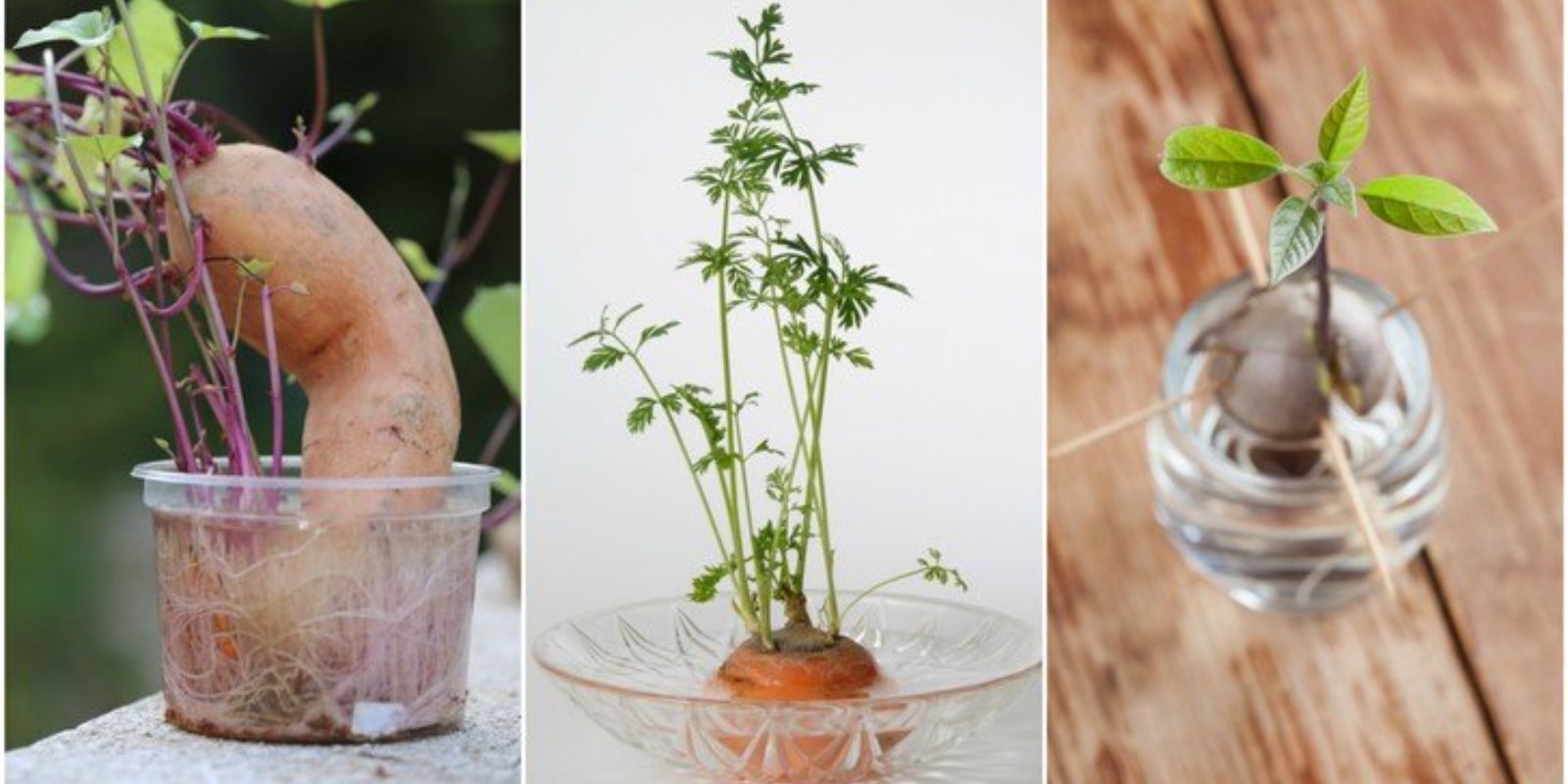Introduction
Imagine turning your kitchen scraps into a flourishing vegetable garden. Not only does this save money, but it also helps reduce waste while ensuring you always have fresh produce at hand. From celery to sweet potatoes, many vegetables can regenerate with minimal effort. Let’s dive into the magical world of regrowing vegetables and learn how to turn everyday scraps into a sustainable food source.
1. Green Onions
Green onions are one of the easiest vegetables to regrow. Simply cut off the green tops and leave the white base with roots intact.
- How to Regrow: Place the base in a glass of water, ensuring the roots are submerged.
- Tips: Change the water every 2-3 days to prevent rot. Within a week, you’ll notice fresh green shoots sprouting.
2. Celery
Celery is another vegetable that regrows wonderfully from its base.
- How to Regrow: Cut off the stalks and place the base in a shallow dish of water with the cut side up.
- Tips: After a few days, roots and small leaves will appear. Once established, plant it in soil for continuous growth.
3. Romaine Lettuce
Romaine lettuce can grow new leaves even after you’ve used most of the head.
- How to Regrow: Submerge the bottom inch of the lettuce in a bowl of water.
- Tips: Keep it in a sunny spot and watch new leaves sprout in about a week. For a full head, transfer it to soil.
4. Carrot Tops
While you can’t regrow the carrot itself, the tops can be regrown for use in salads or as garnish.
- How to Regrow: Cut the tops off and place them in a shallow dish of water, cut side down.
- Tips: New leafy greens will sprout in a week.
5. Garlic
Garlic cloves can regrow either for their flavorful green shoots or new bulbs.
- How to Regrow: Plant a single clove in soil, pointy side up.
- Tips: Ensure it’s in a sunny location for optimal growth.
6. Potatoes
If your potatoes start to sprout, don’t toss them—plant them!
- How to Regrow: Cut the potato into chunks, ensuring each piece has at least one sprouted “eye.” Let the pieces dry for 24 hours before planting in soil.
- Tips: Plant in a deep container or directly in your garden.
7. Ginger
Ginger regrows effortlessly from a small piece of root.
- How to Regrow: Break off a small piece of ginger with visible buds and plant it in soil with the buds facing up.
- Tips: Keep the soil moist and place it in indirect sunlight. New shoots and roots will appear in a few weeks.
8. Basil
Basil can be propagated from cuttings, making it one of the most rewarding herbs to regrow.
- How to Regrow: Place 4-5 inch basil stems in a glass of water, ensuring the leaves are above water.
- Tips: Once roots are 2 inches long, transplant them into soil for a thriving basil plant.
9. Cilantro
Cilantro stems can grow new roots in water, just like basil.
- How to Regrow: Place 2-3 inch stems in water and wait for roots to appear.
- Tips: Transplant to soil when roots are well-established, and watch your cilantro flourish.
10. Sweet Potatoes
Sweet potatoes can produce new plants, known as slips, from a single tuber.
- How to Regrow: Cut a sweet potato in half and place it in water, with half submerged.
- Tips: Slips will grow in a few weeks. Once they are 4-6 inches long, remove and plant them in soil.
11. Leeks
Leeks regrow in a manner similar to green onions.
- How to Regrow: Save the white base with roots and place it in a glass of water.
- Tips: Change the water regularly, and soon, you’ll have fresh leek greens.
12. Beet Greens
Although you can’t regrow a whole beet, the tops can produce edible greens.
- How to Regrow: Place the beet top in a shallow dish of water with the cut side down.
- Tips: Beet greens will sprout within a week and can be harvested for salads or cooking.
13. Onions
Onions can regrow from their discarded bottom portion.
- How to Regrow: Cut the bottom inch of the onion and plant it in soil, root side down.
- Tips: Water regularly, and new shoots will emerge, leading to a fully grown onion.
The Benefits of Regrowing Vegetables
Regrowing vegetables is not only a cost-effective way to maintain a steady supply of fresh produce but also an eco-friendly method of reducing food waste. It’s a fun and educational activity for families, helping everyone understand where their food comes from.
Conclusion
With minimal effort and a little patience, you can regrow many vegetables right at home. Whether you’re saving green onion scraps or planting sweet potato slips, the results are rewarding and sustainable.
Motivation to Act
Start regrowing your veggies today and transform your kitchen waste into a thriving garden. Share your regrowth success stories and inspire others to join this eco-friendly movement! 🌱
#RegrowVeggies #SustainableLiving #ZeroWasteGardening #GrowYourOwnFood #GardeningMagic #FreshFromScraps #HomeGardeningHacks

